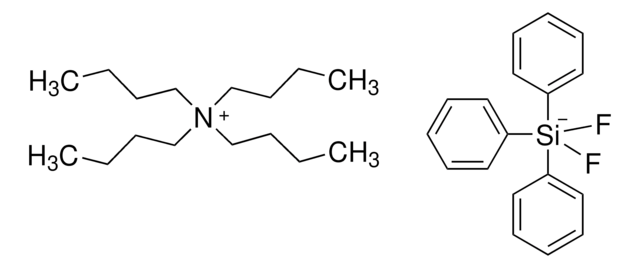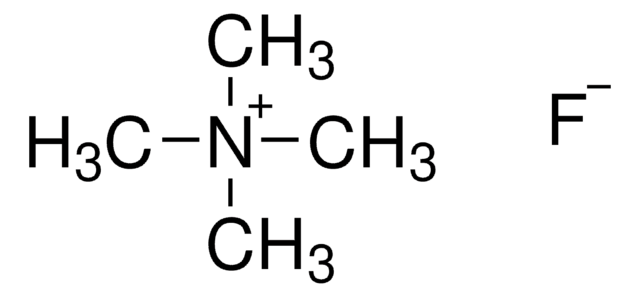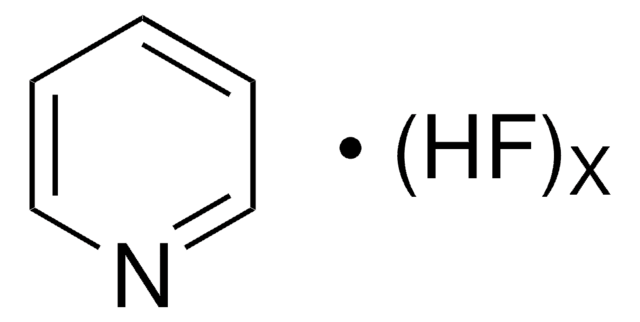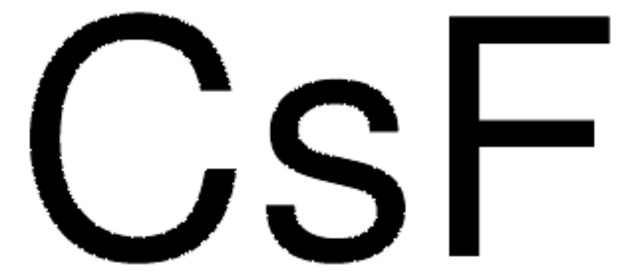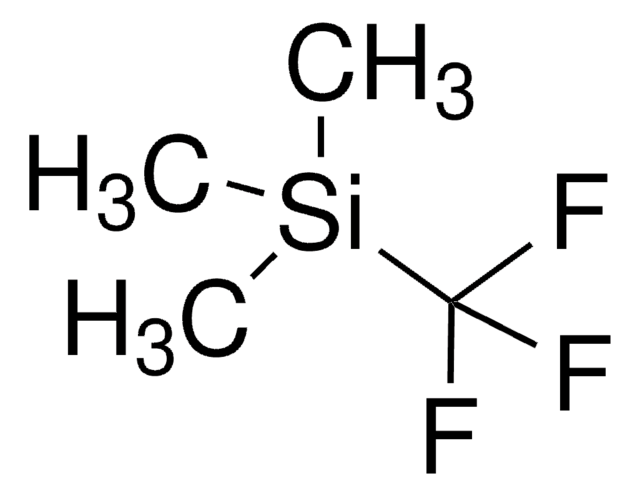Wichtige Dokumente
250600
Tris(dimethylamino)sulfoniumdifluortrimethylsilikat
technical grade
Synonym(e):
TAS-F, TASF, Tris-(dimethylamino)-schwefel-trimethylsilyldifluorid
About This Item
Empfohlene Produkte
Qualität
technical grade
Qualitätsniveau
Eignung der Reaktion
reagent type: reductant
Lagertemp.
2-8°C
SMILES String
C[Si-](C)(C)(F)F.CN(C)[S+](N(C)C)N(C)C
InChI
1S/C6H18N3S.C3H9F2Si/c1-7(2)10(8(3)4)9(5)6;1-6(2,3,4)5/h1-6H3;1-3H3/q+1;-1
InChIKey
JMGVTLYEFSBAGJ-UHFFFAOYSA-N
Suchen Sie nach ähnlichen Produkten? Aufrufen Leitfaden zum Produktvergleich
Allgemeine Beschreibung
Anwendung
It can also be used
- To synthesize deoxyfluoro sugars by reacting with trifluoromethanesulfonyl derivatives of partially protected sugars.
- As a reagent for the fluorination of hydroxyl-containing compounds.
Sonstige Hinweise
Signalwort
Danger
H-Sätze
Gefahreneinstufungen
Skin Corr. 1B
Zusätzliche Gefahrenhinweise
Lagerklassenschlüssel
8A - Combustible corrosive hazardous materials
WGK
WGK 3
Flammpunkt (°F)
Not applicable
Flammpunkt (°C)
Not applicable
Persönliche Schutzausrüstung
Eyeshields, Faceshields, Gloves, type P3 (EN 143) respirator cartridges
Hier finden Sie alle aktuellen Versionen:
Besitzen Sie dieses Produkt bereits?
In der Dokumentenbibliothek finden Sie die Dokumentation zu den Produkten, die Sie kürzlich erworben haben.
Unser Team von Wissenschaftlern verfügt über Erfahrung in allen Forschungsbereichen einschließlich Life Science, Materialwissenschaften, chemischer Synthese, Chromatographie, Analytik und vielen mehr..
Setzen Sie sich mit dem technischen Dienst in Verbindung.